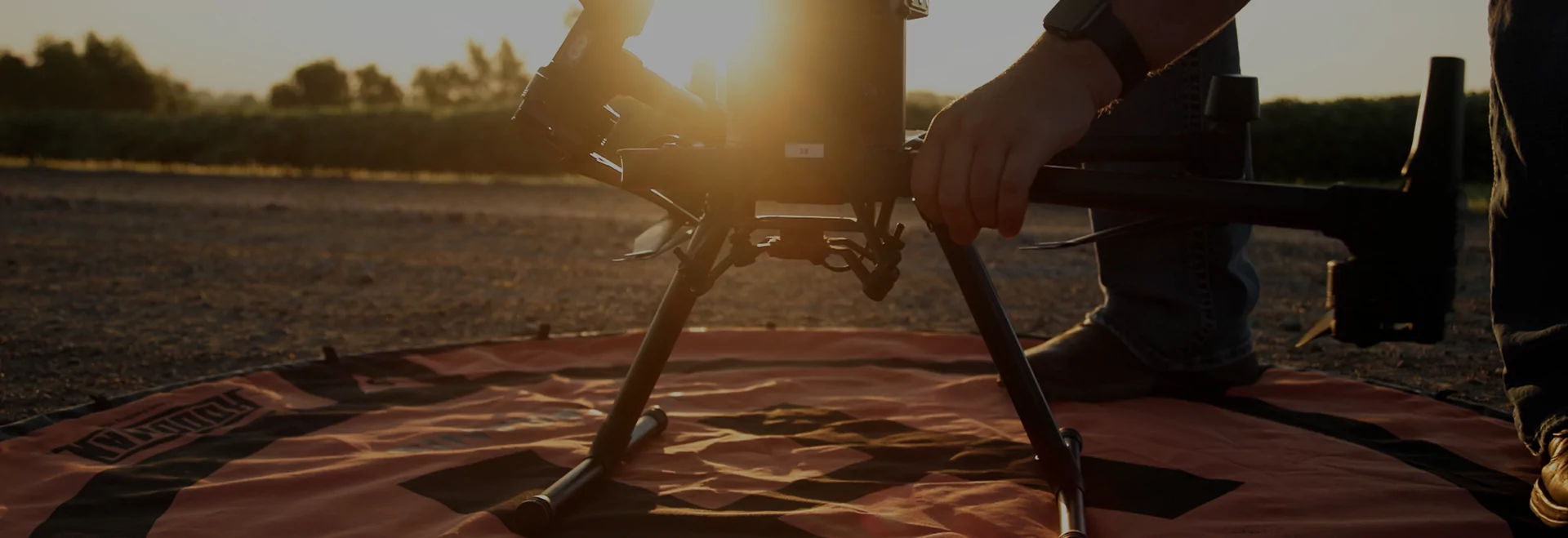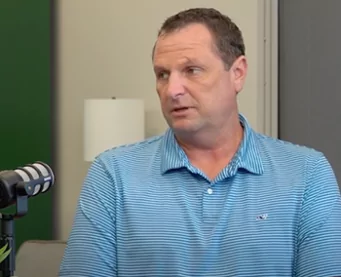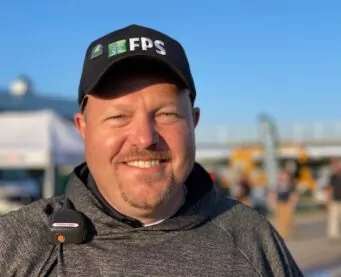Mike sat down with Taylor Moreland, owner of Agri Spray Drones (ASD), on the live stage of the Taranis tent at the 2023 Farm Progress Show to record this episode of the AcreForward podcast. And as you would expect, drones and technology were central themes, but the highlight of the conversation centered on a mission both companies hold near and dear: empowering rural America and creating roads for young people that deliver them back to the farm gate.
“Our mission statement is “Empowering Rural America,” Moreland shares, “and we’ve seen demand by young people who see this as an opportunity. I really think that is a reason we are seeing such high demand for this technology and adoption at higher rates than the data can keep up with and FAA can catch up with.”
DiPaola—Taranis—agrees. With a similar mission statement and business goal, the team at Taranis is always looking for ways to create and grow prosperity across rural America. From supporting Little League baseball to the local fire department, the team invests in driving opportunity back to local communities.
“For the past four years, we’ve been able to cover millions of acres. Many, many more people are looking at ag drones as a career,” DiPaola explains. “It’s new jobs and it’s really, really exciting. We’ve seen the world change, and it sounds like our bet (at Taranis) was the same as yours, Taylor. We saw a talented supply of people who wanted to work in these rural areas to help solve problems and be a part of the future of their communities, and we’ve worked to enable those opportunities.”
Seeing a Solution
Moreland grew up on a dairy farm in western Missouri, which emphasizes his work ethic and dedication to the industry.
“Ag has always been a big part of my life. I studied it in college and worked as a Pioneer seed dealer after college,” he tells us. “And I’ve been testing drones since they started making their debut in agriculture.”
The problem with the early models of drones Moreland tested was that while the drone itself was sturdy enough, the technology and software driving the drone’s operation still needed development to utilize the UAV to its full potential.
“There’s a lot of overpromising when it comes to technology and ag, so taking what is out there and then finding what can actually be accomplished on the farm, is where we have to meet in the middle,” Moreland says.
At the intersection of promises and achievement is always practical application—a commitment both ASD and Taranis have made for the customers they serve. Today, the companies leverage drones expedite the capabilities of their farmer and retailer customers.
DiPaola notes that technology is changing what farmers can accomplish: improving yields and reducing passes and footsteps across the field.
“There are a lot of factors that go into just getting a crop started. Farmers are fighting so many things that are trying to rob yield as soon as the seed meets the soil. But tech has changed that, especially what we are able to do with drones,” DiPaola says.
A New Frontier in Field Management
Spray drones are much different than any other drone technology. Spray drones are not collecting data, processing information, or taking pictures. Spray drones are an application piece of equipment—ag spray drones are ag equipment.
“What got me started in spray drones was my ag chemical sales business. Around 2018, I was working with farmers and working with their application provider, the pilots, and I was in the middle of the conversation. That’s a difficult spot to be in.” Moreland explains of the need he saw for a service to mitigate timing and weather challenges. “Everyone wants their fungicide on at the right time, the right place, and all at once. It’s hard to do that when there is a limited number of pilots—that was when I first started seeing the potential of spray drones filling those gaps.”
The problem: ag spray drones were small: 2.5 gallons and every ag spray drone retailer Moreland reached out to knew nothing about agriculture.
“Retailers just didn’t know anything about how to take care of farmers, about ag, chemistry, about after sales support and service, and that made me realize that maybe we shouldn’t be focusing on applying for farmers, but on providing ag spray drones as a tool for farmers and individuals to offer spray services,” Moreland says.
Today, Agri Spray Drones works with the largest drone manufacturer in the world, DJI. Moreland says that of the companies he researched and trialed, DJI delivered the best hardware and software coupled with ease of use for the applicator.
The progression, as with most technologies, has been rapid. Agri Spray Drones offered the T-20 beginning in January of 2021. The solution delivered a 5-gallon holding tank. Today, the company sells DJI’s T-30 and T-40 models, as well, with the latter serving as the current flagship model, delivering a 10.5-gallon tank capacity.
“Right now, we’ve got a little over a thousand drones in operation across the country between the T-20, T-30 and T-40 models,” he says.
There’s more growth, more technology, and more discussion of how both Taranis and ASD are fueling agriculture’s progress in this episode of the AcreForward podcast. To listen to the full episode and Mike’s conversations with other ag industry professionals, visit www.AcreForwardPodcast.com.




